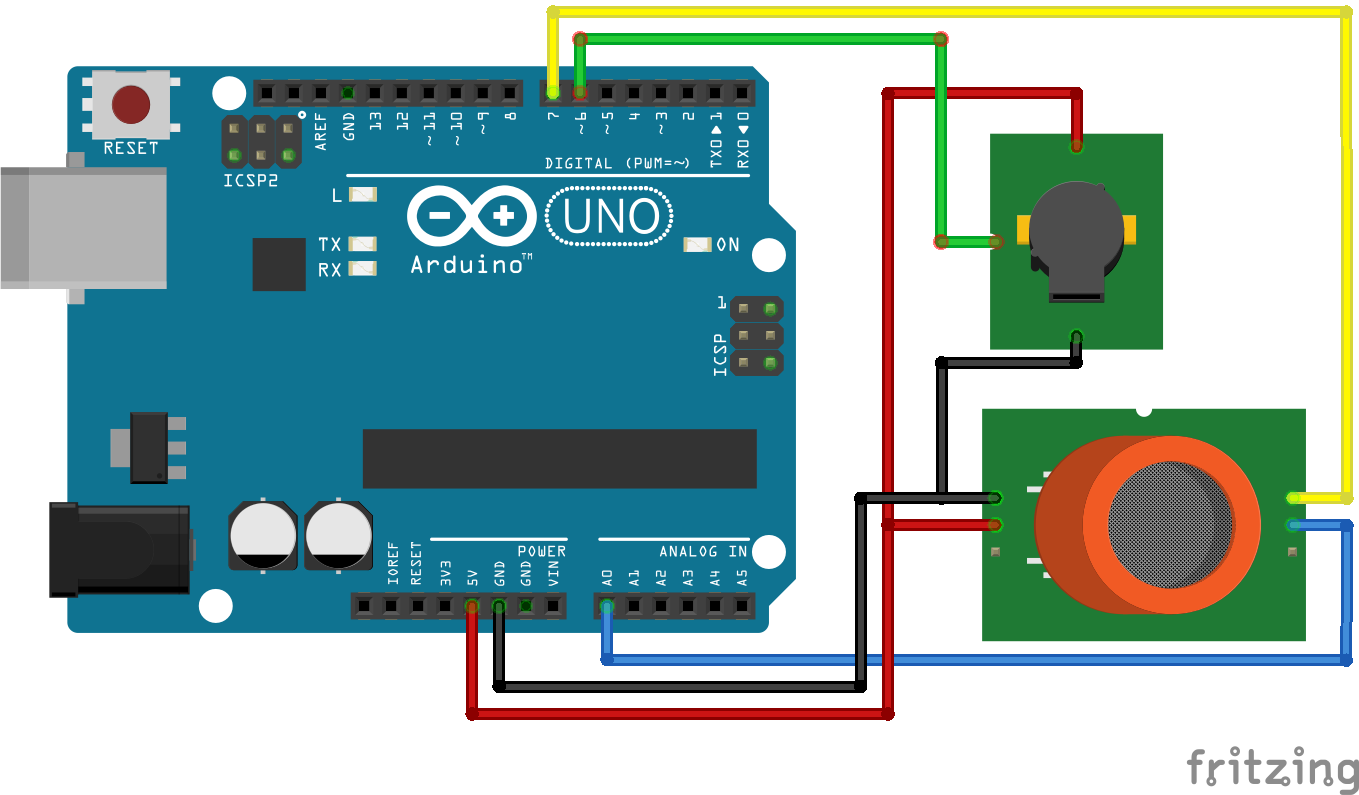

Now you can also see the sensing element that we have talked about earlier.The star-shaped pins of the sensor are formed because of the structure of the actual sensing and heating element and its connected to the six legs of the sensor. As you can see in the above image we have cut the stainless steel mesh and we have placed it on the side of the sensor. The sensor looks like something like this when the mesh is removed. Now we don't want you to cut and damage you sensor, so we have done that for you, the below image shows the mesh decapped from the actual sensor First one is the heating element which is made out of nichrome wire and other is the sensing element that is made out of a platinum wire with a coating of tin dioxide. If we decap the sensor we can see the sensor is made out of two major elements. This mesh structure also provides resistance against dust and other suspended particulars and it only lets in the gaseous elements from the atmosphere. The heating element is placed inside this stainless steel mesh The MQ-2 gas sensor needs a heating element in order to properly detect combustible glasses but, a heating element close to combustible gasses could be disastrous, so the sensor is manufactured with an anti-explosion network made out of two thin layers of stainless steel mesh as you can see in the image below. How Does the MQ-2 Gas Sensor Module Work? Finally we have some resistor capacitors for decoupling and filtering. We also have a sensitivity adjustment Trim-pot, with that we can adjust the sensitivity of the device. This board also has a comparator OP-Amp onboard that is responsible for converting the incoming analog signal from the gas sensor to a digital signal. The power LED turns on when power is applied to the board and the Dout LED turns on when the trigger value set by the potentiometer is reached. As you can see in the image above the module has two onboard LEDs. To power the circuit we are using the 5V pin of the arduino because the operating voltage range of this module is 5V with ☐.1% tolerance. Like all the other basic sensor modules, this MQ-2 Gas and smoke sensor module has four pins, two of which are for VCC and Gnd and the other two can simultaneously output analog and digital data. The parts markings of the MQ-2 Gas Sensor is given below. Also these are low cost, easy to use sensors featuring a wide sensing range that can be trimmed down to adjust the sensitivity. In most Arduino projects, the MQ-2 sensor is used to detect hazardous or flammable gas or smoke and hence this sensor is popular among beginners.

GND is the ground pin of the board and it should be connected to the ground pin of the Arduino.ĭOUT is the Digital output pin of the board, output low indicates gas or smoke is not present in the atmosphere and output high indicates gas or smoke is present in the atmosphere.ĪOUT is the Analog output pin of the board that will give us an analog signal which will vary between vcc and ground based on the gas level detected MQ-2 Gas and Smoke Sensor Module – Parts VCC is the power supply pin of the Gas Detection Sensor that can be connected to 5V of the supply.

The MQ-2 Gas detection sensor module has four pins VCC, GND, Aout, and Dout that can be used to get the needful information out of the sensor, The pinout of the MQ-2 Gas detection sensor is given below: So, let's learn how we can use it to give our projects the sense of smell. That is why in today's article we are going to talk about one such sensor which is commonly used in smoke and gas detectors, namely the MQ-2 Combustible Gas and Smoke Sensor. Don't be tricked by the name, because this sensor can not only detect gas or smoke, but can also detect LPG, Alcohol, Propane, Hydrogen, Methane, and Carbon Monoxide. Nowadays, sensors play a major role in the safety and security of many different apartments, homes and offices by detecting smoke, fire, or gas and providing an alarm to the concerned person.


 0 kommentar(er)
0 kommentar(er)
